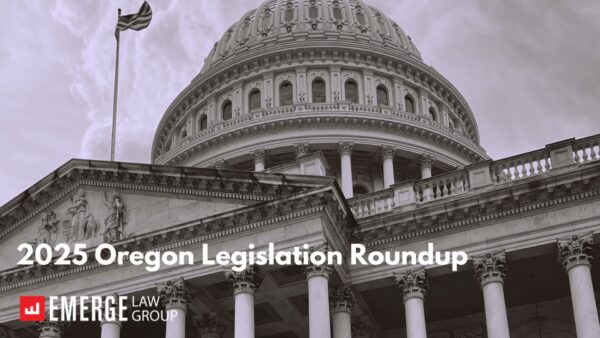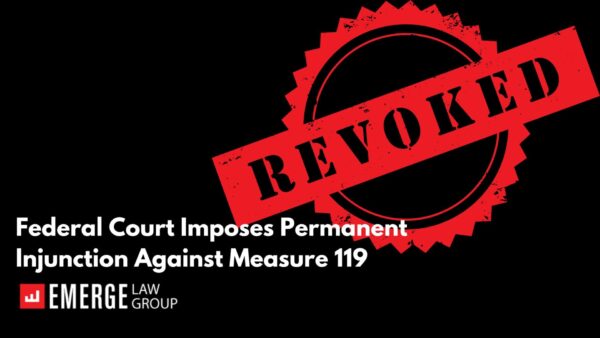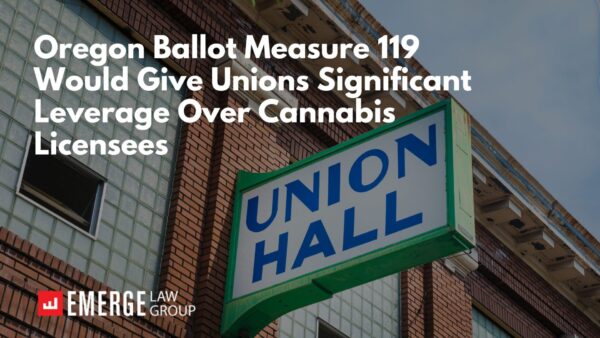To say the least, 2020 was a year unlike any other, including for the cannabis industry. California, among other states, declared cannabis “essential” during the pandemic – a vital win for the industry in a year short on wins. The last few years have been nothing short of transformative – for many Americans, cannabis has gone from flat-out illegal to essential. But the work is far from over, and more change is coming, certainly in California and some of its local jurisdictions.
California State Law and Regulations
Big changes are coming down the pike this year for the entire California cannabis industry. First, the industry awaits the completion of two key regulatory programs– the Cannabis Appellations Program (“CAP”) and the Certification of Cannabis Comparable to National Organic Program (“OCal”). CAP paves the way for cultivators to petition for and claim an appellation of origin, which is a protected designation that identifies the geographical origin of cannabis and how the cannabis was produced. CAP will provide meaningful support to small legacy farmers that represent California regions famous for their unique cannabis. OCal is a establishes a cannabis organics designation program similar to the National Organics Program. The final regulations are expected to be released shortly.
Second, the state is working to consolidate the three state agencies that currently regulate cannabis – Bureau of Cannabis Control (“BCC”), California Department of Food and Agriculture – Cal Cannabis (“Cal Cannabis”), and the California Department of Public Health – Manufactured Cannabis Safety Branch (“MCSB”) – into one – the Department of Cannabis Control (“DCC”). to the consolidation will hopefully streamline the application process, lower barriers to enter the market, and result in a single set of regulations for all cannabis applicants. The DCC’s creation is set for July 1, 2021.
Lake County
In December 2020, the Lake County Board of Supervisors adopted an ordinance that imposed certain restrictions on “farmland” designated areas. The ordinance created new “farmland protection zones” in which outdoor cannabis cultivation is prohibited. Outdoor cultivation may not even exist within 1000 feet of those zones, and any outdoor cultivation premises within a mile of those zones must install “vegetation screens” to block the cannabis operations from view.. The new ordinance also imposes setback requirements for outdoor cultivators on designated farmland outside of protection zones, including 500-1000 ft setbacks from “important highways” and may require additional vegetative screening as well. The distances for the setbacks are still under review. The County also discussed applying the new rule to cultivators with pending permit applications and requiring some cultivators to “move” their canopy, though the County may provide exceptions to certain existing permit applicants depending on their circumstances.
Lastly, we expect the County to begin discussions on extending the deadline for the required registration with the California State Water Resources Control Board (“SWRCB”). For local and state compliance, all cultivators must register their proposed water use with the SWRCB. To receive a local permit, Lake County requires cultivators to apply with SWCRB prior to a specific date. The County has already moved this date twice, with the last deadline falling on October 31, 2020. Cultivators who failed to apply with SWRCB by that deadline are not qualified to apply for a local cannabis permit even if they’ve met all other requirements. Hopefully, the County extends the deadline and allows additional operators to enter the Lake County market. Discussions on this issue are expected to resume sometime this year.
Mendocino County
Mendocino County held a meeting on January 5, 2021 to discuss two cannabis-related topics: (1) the upcoming County legislative agenda, and (2) creating a process for cultivators to hire consultants to assist them with California Environmental Quality Act (“CEQA”) compliance. The County is ramping up its legislative advocacy in the coming year. The County plans to advocate on both the state and federal level regarding the state extension of the provisional license to January 1, 2024 (which would provide much-needed breathing room for cannabis licensees who are still waiting for their official annual licenses); removal of the 4-acre cap on cannabis cooperative associations; and efforts to legalize cannabis federally.
The Board also discussed the framework for helping its cultivators meet their extensive CEQA requirements. CEQA details over 20 review categories to ensure that the project does not heavily impact the surrounding environment. The review process for each cultivation site takes at least 6 months regardless of the jurisdiction. Given the County staff time required to conduct each review, the County signaled its desire to remove itself from the equation and allow operators to prepare their own packages for County approval with the help of CEQA consultants. Ultimately the County Board approved the creation of a framework to certify CEQA consultants and maintain a public list of approved consultants.
Lastly, and most importantly for new cultivators, the Board is discussing the new phase 3 ordinance on January 25, 2021. Currently, the County only accepts applications under phase 2 – for certain indoor and mixed light cultivation. Phase 3 is currently set to open on April 1, 2021, which would open the door for all cultivators to obtain local permits. Cultivators looking to cultivate in Mendocino County should start preparing now in anticipation of phase 3.
Sonoma County
After several delays, we expect Sonoma County to release its long-awaited cannabis ordinance some time in 2021.The ordinance is expected to streamline the local cannabis permitting process by treating cannabis cultivation similar to other agricultural uses and move the application review to the Agriculture Department. Without the ordinance, many local cultivators, who have already been waiting for local permit approval for two years or more, will continue to languish in line for approval with no end in sight. As of the end of October 2020, the County has only issued 6 cannabis-related conditional use permits. Hopefully, the County will release the ordinance ASAP to get the local permitting process back on track. If you are a part of the Sonoma County cannabis community who would benefit from the new ordinance, you may wish to contact your county Supervisor and urge him or her to prioritize cannabis in 2021.
Trinity County
On December 28, 2020, the Board of Supervisors moved to approve a new cannabis ordinance to implement certain “mitigation” measures required under CEQA. The ordinance goes into effect on January 27, 2020. The ordinance includes numerous changes including new noise level requirements, screens for cultivation along county designated scenic roadways, prohibition on all cannabis cultivation in the 100-year flood plain, specific requirements for the required biological assessment report detailing potential environmental impacts, and a slew of other mitigation requirements for environmental protections. Most importantly, the new ordinance provides for “only one application countywide may be submitted per legal parcel.” This provision effectively limits each parcel to only one licensed facility.
Additionally, the County has taken steps to address the longer-than-expected delay in local permit renewals. To prevent widespread permit expiration, the Board passed an “urgency ordinance” extending the current local cannabis permits for an additional 6 months. The ordinance also prohibits further processing of new cannabis permit applications pending implementation of the ordinance’s other requirements.
2021 is gearing up to, once again, be a busy year for the California cannabis industry. If you have any questions regarding changes to California state or local laws and regulations, don’t hesitate to contact Emerge’s regulatory attorneys for help.





